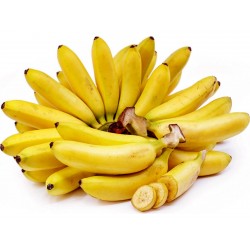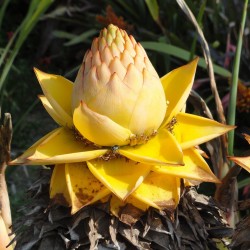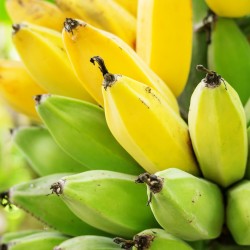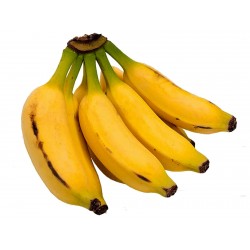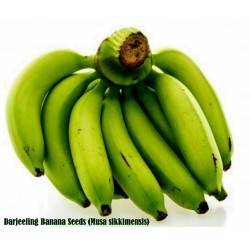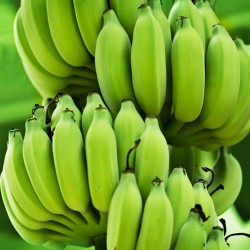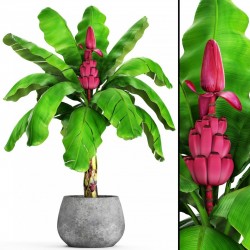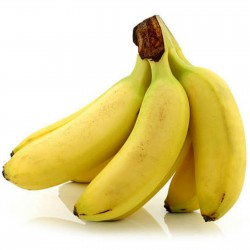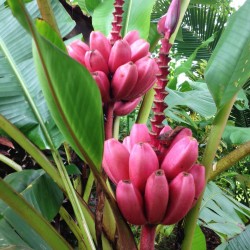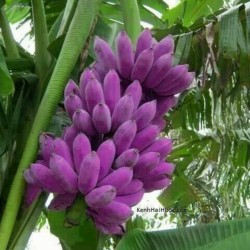Seeds Gallery Com,
5/
5
<!DOCTYPE html>
<html>
<head>
<meta http-equiv="Content-Type" content="text/html; charset=UTF-8" />
</head>
<body>
<h2><strong>Törpe banán mag (Musa acuminata)</strong></h2>
<h2><span style="color: #ff0000;"><strong>Ár csomag 3 magot.</strong></span></h2>
<p><strong>Hidegtűrő banánnövény, amely szívós a 8. zónában</strong></p>
<p>A<span> </span><b>törpe banán</b><span> </span><i>(Musa acuminata)</i><span> </span>az<span> </span>egyszikűek<span> </span><i>(Liliopsida)</i><span> </span>osztályának<span> </span>a<span> </span>gyömbérvirágúak<span> </span><i>(Zingiberales)</i><span> </span>rendjébe, ezen belül a<span> </span>banánfélék<span> </span><i>(Musaceae)</i><span> </span>családjába<span> </span>tartozó<span> </span>faj.</p>
<h2><span class="mw-headline" id="Előfordulása">Előfordulása</span></h2>
<p>A törpe banán<span> </span>Kína<span> </span>déli részéről, valamint a<span> </span>Fülöp-szigetekről,<span> </span>Indiából,<span> </span>Indonéziából,<span> </span>Malajziából<span> </span>Mianmarból,<span> </span>Srí Lankából<span> </span>és<span> </span>Thaiföldről<span> </span>származik.<span> </span>Tanzániába<span> </span>betelepítették. A<span> </span>Földön<span> </span>sokfelé termesztik.</p>
<h2><span class="mw-headline" id="Megjelenése">Megjelenése</span></h2>
<p>A növény 1,5-2<span> </span>méteres<span> </span>törzsét, amely valójában áltörzs, az összetapadó nagy levélüstökben végződő levélnyelek alkotják. Az 1-1,5 méter hosszú és 30-40 centiméter széles<span> </span>levelek<span> </span>csavarmenetszerűen rendeződnek el. A növénynek persze valódi törzse is van, de a föld alatt; ez az úgynevezett<span> </span>gyöktörzs, más néven<span> </span><i>rizóma</i>. A gyöktörzs<span> </span>rügyeiből<span> </span>fejlődnek az új tősarjak, s azokból tör elő az üreges áltörzsön belül felnyúló és a levélrózsa közepén megjelenő fürtvirágzat. A virágzat, akár másfél méteres is lehet. A szintén csavarmenetszerűen elhelyezkedő<span> </span>virágokat<span> </span>nagyméretű lilásbarna<span> </span>murvalevelek<span> </span>fedik.</p>
<h2><span id="Tart.C3.A1sa.2C_felhaszn.C3.A1l.C3.A1sa"></span><span class="mw-headline" id="Tartása,_felhasználása">Tartása, felhasználása</span></h2>
<p>A növény tősarja a<span> </span>trópusi<span> </span>ültetvényeken fél-háromnegyed év alatt, kezd teremni, de<span> </span>Magyarországon<span> </span>és más<span> </span>mérsékelt övi<span> </span>országok üvegházaiban, a törpe banán, csak 2-3 év múlva kezd virágozni. A<span> </span>termés<span> </span>beéréséhez 3-4 hónap kell. A<span> </span>sárga<span> </span>mintegy 15-20 centiméter hosszú termések zamatosak és kellemes ízűek. Mivel a törpe banán gyümölcse megtermékenyülés nélkül jelenik meg, azaz<span> </span><i>partenokarpikus</i><span> </span>termést alakít ki, nincsen<span> </span>magja. Az érett törpe banán szerfölött tápláló:<span> </span>cukrot,<span> </span>savakat,<span> </span>fehérjét,<span> </span>zsírt<span> </span>és sok<span> </span>C-vitamint<span> </span>tartalmaz. A termések beérése után a gyümölcsöt hozó sarj elpusztul, és szerepét a föld alatti gyöktörzsből előtörő új sarj veszi át.</p>
<p>A törpe banán lakásban is tartható. A növénynek 50-60 centiméter magas, ugyanekkora átmérőjű, enyhén savanyú, tápdús földdel töltött fadézsát kell készíteni. 20-24 Celsius-fokot kell biztosítsunk neki. A hőmérséklet sohasem csökkenhet 16 Celsius-fok alá. A huzatra is érzékeny. Nagy leveleit napközben néhányszor permetezni kell. Ha megfelelően tartjuk, akkor 3-4 év alatt, akár teremhet is.</p>
</body>
</html>
V 234 (3 S)




